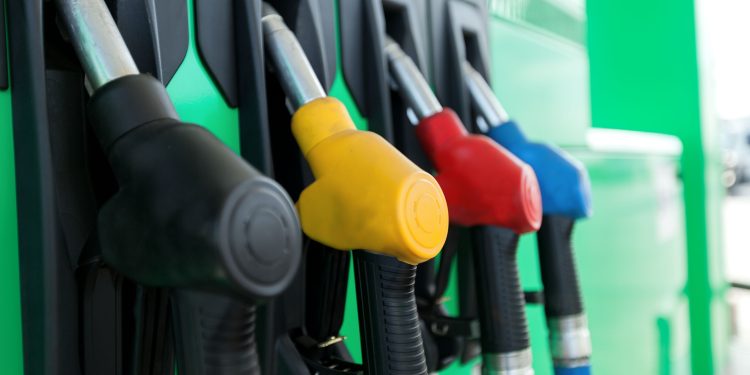2022 has continued to be a challenging year for many businesses and consumers, with many countries experiencing high inflation and recovering from COVID-19. The fuel industry has been particularly vulnerable to global volatility with the sharp rise in fuel prices. The conflict in Ukraine is one factor affecting fuel prices, due to international markets shifting their dependence on Russian oil. However, the price rise can be attributed to actions at both the consumer and retailer levels. How is payment fraud contributing?
Consumer demand has been one key factor contributing to the price hike in fuel. Research from The ai Corporation has identified an overall global increase in transaction volumes of 9.8% between February and March 2022, attributed to the high demand for fuel. Although there have been noticeable increases, this global figure can be taken with a pinch of salt. As with most industries, consumption of fuel significantly declined between 2020 and 2021. That lack of activity has skewed the year-on-year comparison. Other factors that have influenced this hike are worldwide transportation issues and ongoing media coverage of the cost-of-living crisis.
One critical area that is contributing to the rise of fuel, and has largely been ignored, is the rising level of different types of payments fraud to which fuel cards are particularly susceptible. Data from ai indicates that criminals have already started to capitalise on opportunities in the market. For example, if an individual is purchasing fuel with a valid card, but siphoning the fuel from the tank, using a ‘bladder tank’ hidden inside the vehicle; damaging a chip or magstripe to override purchase controls; or using stolen or copied cards to carry out the purchase, the net result is a rise in the cost of fuel for others. This exploitative behaviour has become more prevalent at locations that allow failover to magstripe purchases, which have seen an approximate 30% uplift in fraudulent behaviour.
As we continue to monitor the environment, we anticipate that fuel fraud will continue to rise throughout 2022 and beyond.
Fuel retailers will not only need to take a preventative approach to mitigate these risks by adopting new technology, but they also need to educate their staff and drivers on the latest threats and best practice guidelines.
The cost of transporting fuel to the pump – and maintaining it once it is there – has also contributed to the sustained price increase. Many retailers are experiencing steady growth in card skimming attacks, with skimming identification and early mitigation becoming increasingly prominent. Most skimming occurs using false plates, which can be attached to the front of ATMs or fuel pumps, which look almost identical to the original. The devices then read and store the information from the magnetic strip when it is swiped/inserted.
With the introduction and widespread adoption of EMV cards (cards enabled with chip and PIN Technology), many fraudsters are also opting to use additional equipment in the form of pinhole cameras to collect PIN numbers.
In addition, technology is more accessible. We are seeing more implementations of NFC-enabled terminals, and Bluetooth and WiFi-enabled transmitters, as retailer equip themselves to deal with the interception of payments and collation of personal data. These methods dramatically decrease the time between interception and first-time fraudulent usage, with the highest growth attributed to QR code fraud, where criminals use forms of social engineering to redirect a consumer’s attention at the pump. Fuel retailers can mitigate these threats by checking outside of the pump for visual signs of tampering, non-corporate advertising, and keeping an eye for suspicious vehicles parked nearby to the station.
As the sustained high demand and price fluctuations continue, there is a high probability that types of payments fraud that involve site collusion will occur more frequently. Site collusion can take place in many forms. For example, site staff rationing high-demand fuel types that can be resold illegally, or where customers pay the site staff in cash and use their company fuel card to fuel any vehicles. To prevent this type of fraud, retailers can identify the change in fuelling pattern and see if there is an increase in transactions or a change in the time-of-day re-fuelling occurs. They can also track changes to what sort of goods a customer is purchasing and ensure that fuel card transactions can only be made for a specified vehicle.
Other ai data is pointing towards an increase in application fraud, whereby criminals can impersonate or take over a genuine business to open an account using fake or stolen documents. Fuel card application fraud is exceptionally appealing to criminals, as it can give them access to a large variety of cards, from which they can access many products without paying. If a fraudster is successful with an application, they can be granted access to several fuel cards, for which they are often invoiced after a period of weeks. Therefore, criminals can use the cards until the invoice date and not pay their invoice. There are measures that can be taken to reduce application fraud, such as ensuring new accounts have valid and relevant documentation to corroborate the information they have provided in their application or conducting credit checks for businesses that wish to complete an application.
Criminals have and always will continue to take advantage of the global events that offer them the opportunity to commit fraud. There are measures and tools that fuel retailers can use to prevent payments fraud. By utilizing their existing data, retailers can be alerted quickly to act on specific behaviour and gain insights into changing patterns associated with fraud.
The increase in fuel price can be attributed to multiple factors, both on macro and micro levels. Global instability, pumped-up demand and system vulnerabilities within the fuel and fleet industries have all contributed to the increase. Consequently, criminals have and will continue to exploit these opportunities until the market begins to be stabilised and the industry as a whole takes advantage of the latest fraud prevention technologies.











